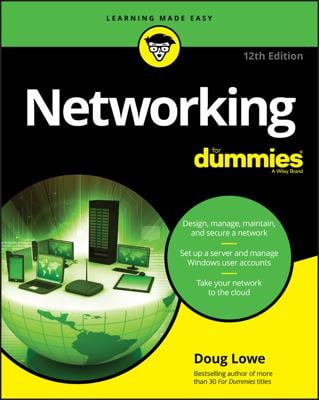One of the first steps in developing a business continuity plan (BCP) is to assess the risk of the various types of disasters that may affect your organization. Weigh the likelihood of a disaster happening with the severity of the impact that the disaster would have.
Environmental disasters
Environmental disasters are what most people think of first when they think of disaster recovery for networks. Some types of environmental disasters are regional. Others can happen pretty much anywhere.
Fire: Fire is probably the first disaster that most people think of when they consider disaster planning. Fires can be caused by unsafe conditions; carelessness, such as electrical wiring that isn’t up to code; natural causes, such as lightning strikes; or arson.
Earthquakes: Not only can earthquakes cause structural damage to your building, but they can also disrupt the delivery of key services and utilities, such as water and power. Serious earthquakes are rare and unpredictable, but some areas experience them with more regularity than others. If your business is located in an area known for earthquakes, your BCP should consider how your company would deal with a devastating earthquake.
Weather: Weather disasters can cause major disruption to your business. Moderate weather may close transportation systems so that your employees can’t get to work. Severe weather may damage your building or interrupt delivery of services, such as electricity and water.
Water: Flooding can wreak havoc with electrical equipment, such as computers. If floodwaters get into your computer room, chances are good that the computer equipment will be totally destroyed. Flooding can be caused not only by bad weather but also by burst pipes or malfunctioning sprinklers.
Lightning: Lightning storms can cause electrical damage to your computer and other electronic equipment from lightning strikes as well as surges in the local power supply.
Deliberate disasters
Some disasters are the result of deliberate actions by others. For example
Intentional damage: Vandalism or arson may damage or destroy your facilities or your computer systems. The vandalism or arson may be targeted at you specifically, by a disgruntled employee or customer, or it may be random. Either way, the effect is the same.
Don’t neglect the possibility of sabotage. A disgruntled employee who gets hold of an administrator’s account and password can do all sorts of nasty things to your network.
Theft: Theft is always a possibility. You may come to work someday to find that your servers or other computer equipment have been stolen.
Terrorism: No matter where you live in the world, the possibility of a terrorist attack is real.
Disruption of services
You may not realize just how much your business depends on the delivery of services and utilities. A BCP should take into consideration how you will deal with the loss of certain services:
No juice: Electrical power is crucial for computers and other types of equipment. Electrical outages are not uncommon, but the technology to deal with them is readily available. UPS (uninterruptible power supply) equipment is reliable and inexpensive.
No communications: Communication connections can be disrupted by many causes. For example, road construction can cut through the phone lines, completely cutting off our phone services, including Internet connections.
No water: An interruption in the water supply may not shut down your computers, but it can disrupt your business by forcing you to close your facility until the water supply is reestablished.
Equipment failure
Modern companies depend on many different types of equipment for their daily operations. The failure of any of these key systems can disrupt business until the systems are repaired:
Computer equipment failure can obviously affect business operations.
Air-conditioning systems are crucial to regulate temperatures, especially in computer rooms. Computer equipment can be damaged if the temperature climbs too high.
Elevators, automatic doors, and other equipment may also be necessary for your business.
Other disaster
You should assess many other potential disasters. Here are just a few:
Labor disputes
Loss of key staff because of resignation, injury, sickness, or death
Workplace violence
Public health issues, such as epidemics, mold infestations, and so on
Loss of a key supplier
Nearby disaster, such as a fire or police action across the street that results in your business being temporarily blocked off

